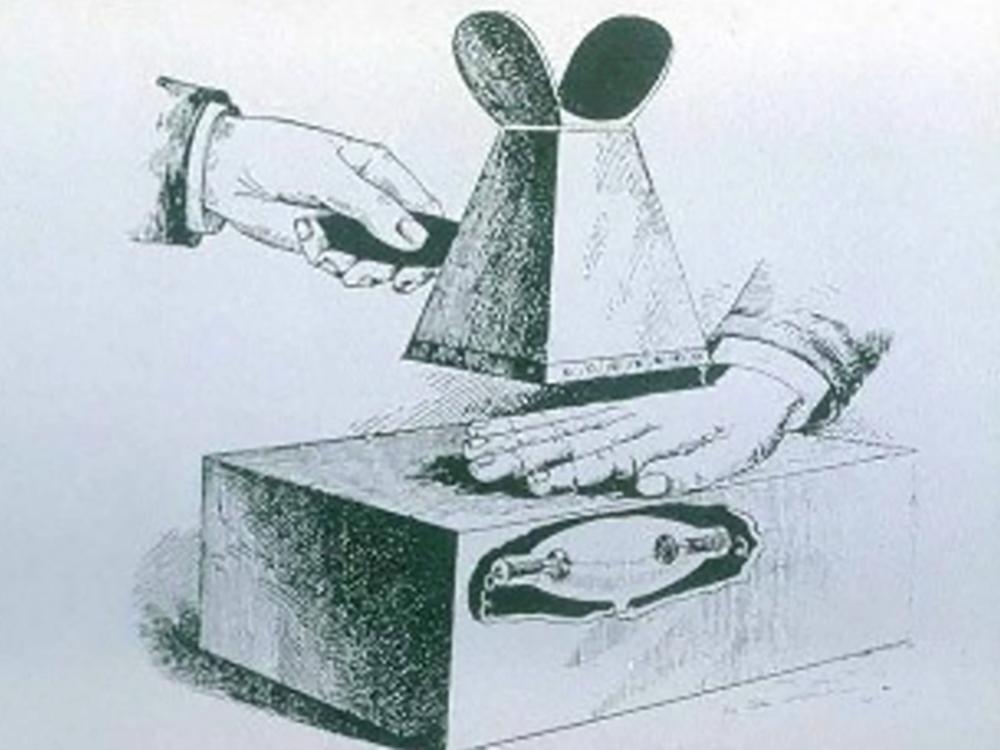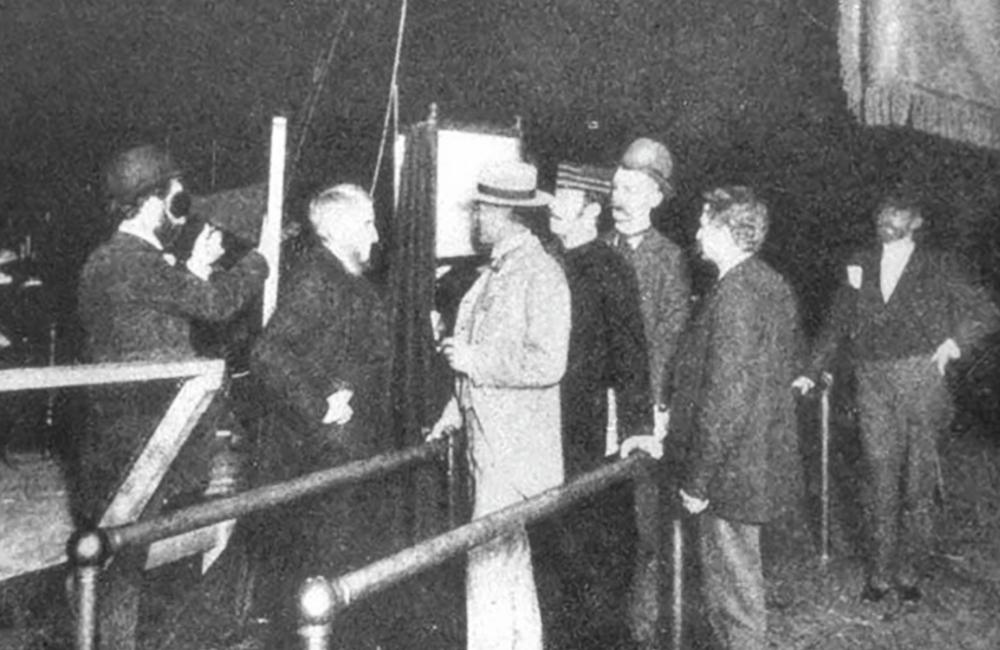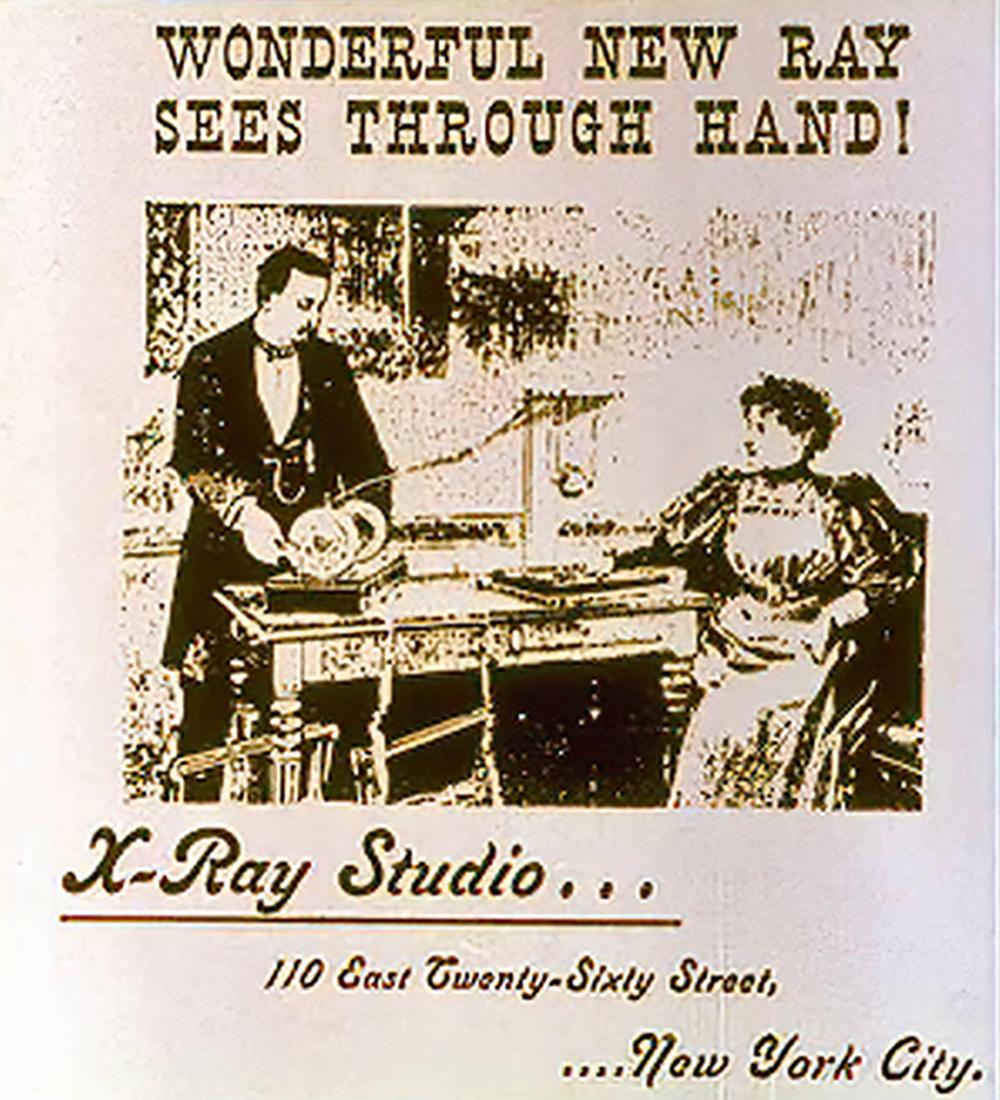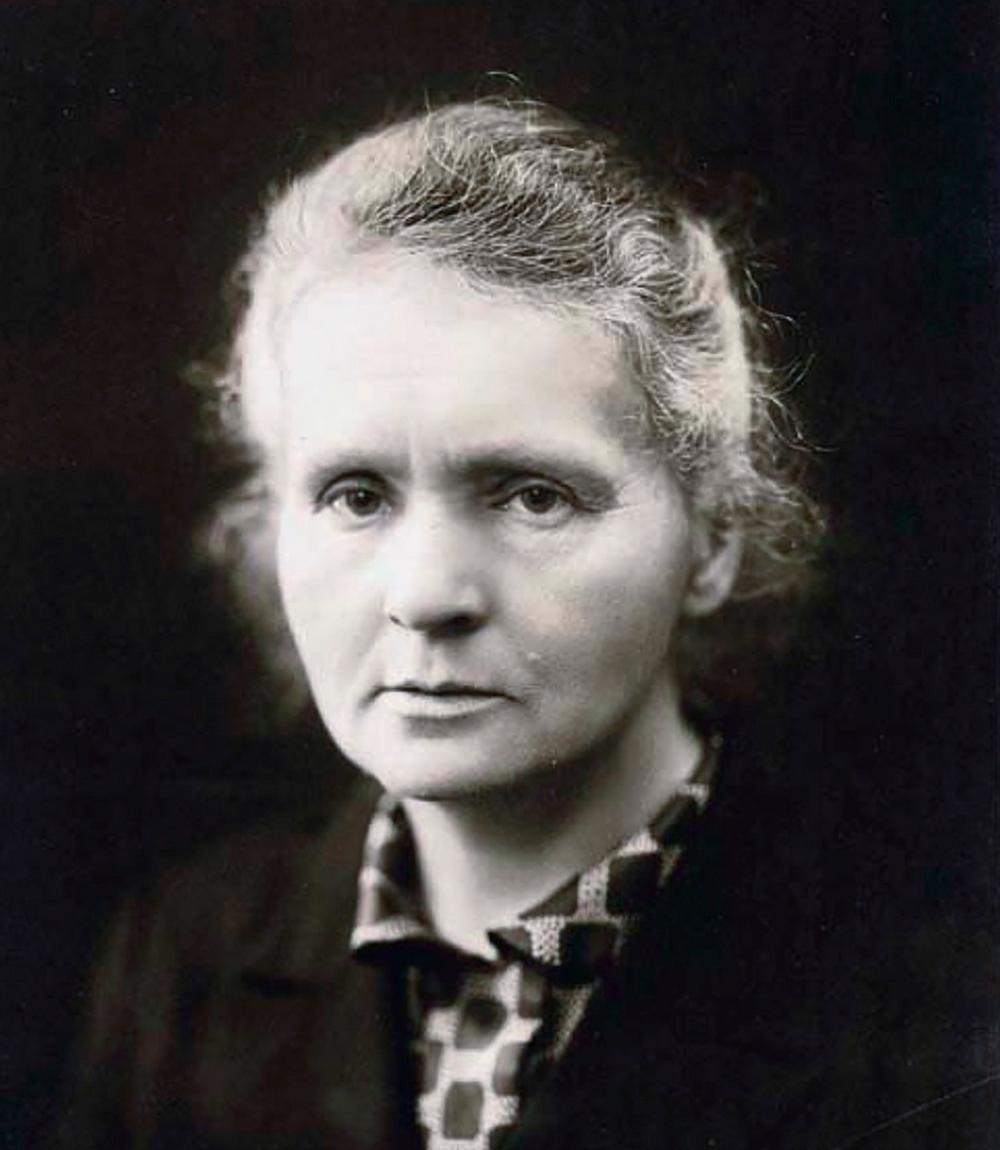Physical Address
304 North Cardinal St.
Dorchester Center, MA 02124
It is difficult to imagine the level of excitement that was felt around the world soon after the discovery of x-rays by Wilhelm Roentgen in 1895. For the first time ever, we could see inside the human body while the person was still alive and without the need for surgery. At the time, coverage in the press was unprecedented in scope and intensity for a scientific discovery. Sensational reports of the new and mysterious rays appeared around the world. Within a year, x-rays were being used for almost everything imaginable ( eTable E.1 ).
| Event | Year |
|---|---|
| Discovery of x-rays | 1895 |
| Thomas Edison demonstrates his fluoroscope at national exhibition | 1896 |
| Discovery of radium chloride by Marie and Pierre Curie | 1898 |
| Wilhelm Roentgen receives first-ever Nobel Prize in Physics | 1901 |
| Marie Curie is first woman to win Nobel Prize (for research on radiation physics jointly with Pierre Curie and Henri Becquerel) | 1903 |
| Radioactivity discovered in hot springs | ∼1903 |
| Clarence Dally (Edison’s assistant) dies | 1904 |
| Isolation of metallic radium by Marie Curie and André-Louis Debierne | 1911 |
| Marie Curie wins 2nd Nobel Prize, this time in Chemistry (for discovery of the elements radium and polonium, and for the isolation of radium) | 1911 |
| Radium used in many bogus products | 1920s onward |
| First radium-dial painter death | 1923 |
Wilhelm Roentgen, considered the “father” of diagnostic radiology, made his remarkable discovery of a new form of electromagnetic radiation he called x-rays on November 8, 1895. Within a few weeks, he presented his paper “On a New Kind of Rays” to a medical society in Wurzburg, Germany, and 3 months after his discovery, x-rays were already in clinical use in the United States. Like Marie and Pierre Curie, he never sought to patent his discoveries believing that they should be publicly available without charge. He received the very first Nobel Prize in Physics in 1901 for his discovery.
Public acceptance of x-rays can be traced in great measure to America’s foremost inventor of the day, Thomas Edison. Edison already had experience experimenting with vacuum tubes and filaments while improving the lightbulb and was immediately fascinated with the new x-rays.
Edison is credited with designing and producing the first commercially available fluoroscope, but he also wanted to create a home fluoroscope ( eFig E.1 ) and was looking to invent a lightbulb that functioned by using x-rays.

In May 1896, Edison, along with Clarence Dally, his assistant, traveled to the National Electric Light Association exhibition in New York City to demonstrate his fluoroscope. Crowds in the hundreds lined up for a chance to stand before a fluorescent screen, then peer into the scope to see their own bones ( eFig E.2 ).

Clarence Dally was a glassblower and one of Edison’s most trusted assistants. Dally would perform the majority of experiments with Edison’s most powerful x-ray tubes, using his own hands as the objects to be fluoroscoped for many hours.
In a few years, Dally began to show skin lesions on his left hand, loss of hair on his head, loss of his eyelashes and eyebrows. Not long after, skin lesions developed on both arms, necessitating amputation of his arms. He died of cancer related to his radiation exposure in 1904, 8 years after he began experimenting with x-rays.
A realization was growing that the new ray had the capacity to do harm, as well as great good. Edison himself walked away from the invention. “Don’t talk to me about x-rays,” he said. “I am afraid of them.” 1
1 Gilbert King. SmithsonianMag.com . March 14, 2012.
Fluoroscopes didn’t quite make it into everyone’s home, but it was relatively simple in those days to acquire the necessary equipment to perform x-rays: a generator, a Crooke’s tube (the x-ray tube), and a fluorescent screen were the major components.
Because anyone could operate the equipment and no licenses were required, photographers, electrical hobbyists, science teachers, even beauticians often set up shop in independent “studios” ( eFig E.3 ).

Physicians were, of course, eager to use the new rays. The addition of an x-ray apparatus to their practice was regarded as a noteworthy occasion, not only for its impact on patient care but on the practice’s finances. The appearance of an “x-ray machine” in a physician’s clinic was a major development not only for the physician but for the whole town and generated further stories on radiation, health, medicine, and science from almost every newspaper toward the end of the nineteenth century.
If the general public loved x-rays, then they absolutely adored radium.
The heroic tale of Marie Curie’s struggle to isolate and purify radium is a scientific legend. She was a truly remarkable scientist. She is the first woman ( eFig E.4 ) to win the Nobel Prize (1903 in Physics along with her husband Pierre Curie and Henri Becquerel for their research on radiation) and the first person and only woman to win a second Nobel Prize in Chemistry in 1911 for her discovery of the elements radium and polonium and for the isolation of radium. She is also the only person to win the Nobel Prize in two different scientific fields (physics and chemistry).

The idea that this new element could produce mysterious rays, provide inexhaustible energy (radium has a half-life of 1600 years!), and eventually change into something else (radon gas) was thrilling to both the scientific community and lay public alike. Radium was hailed as a miracle in 1903 and 1904 headlines and everyone wanted to get their hands on it and insert, ingest, apply, or use it anywhere one could imagine.
Become a Clinical Tree membership for Full access and enjoy Unlimited articles
If you are a member. Log in here